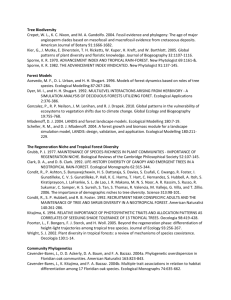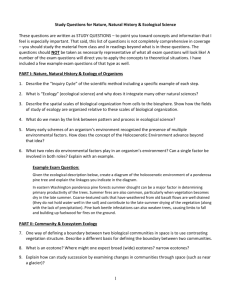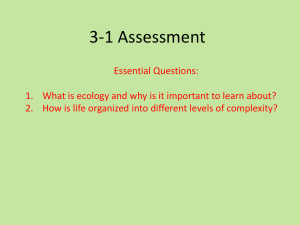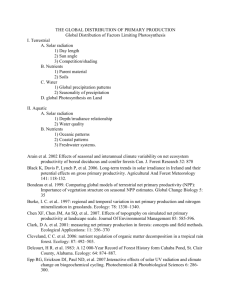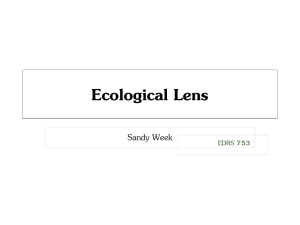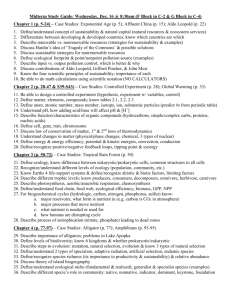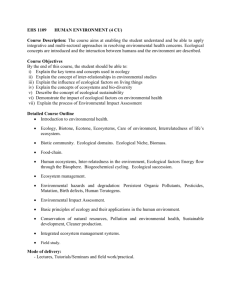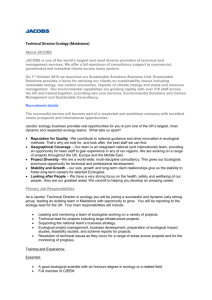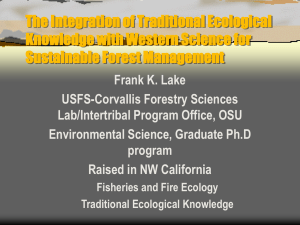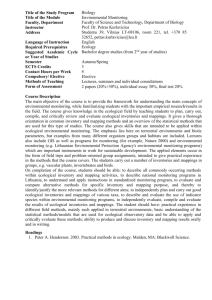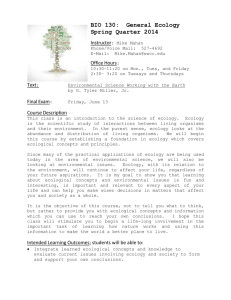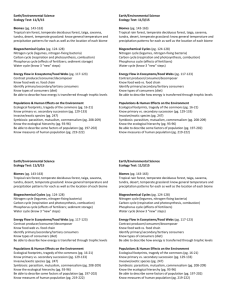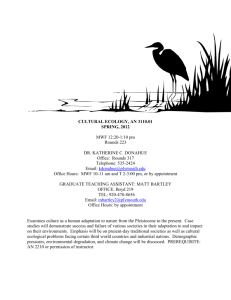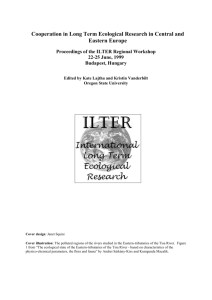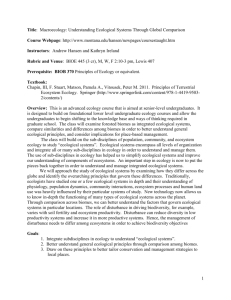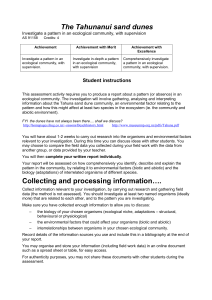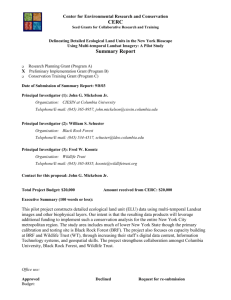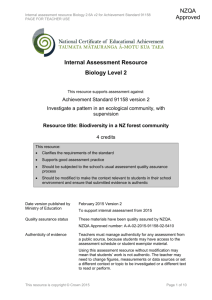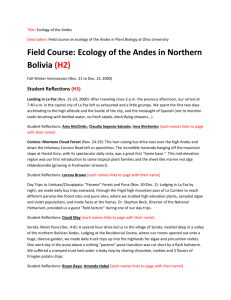Microsoft Word - ecologyworksheet.doc
advertisement
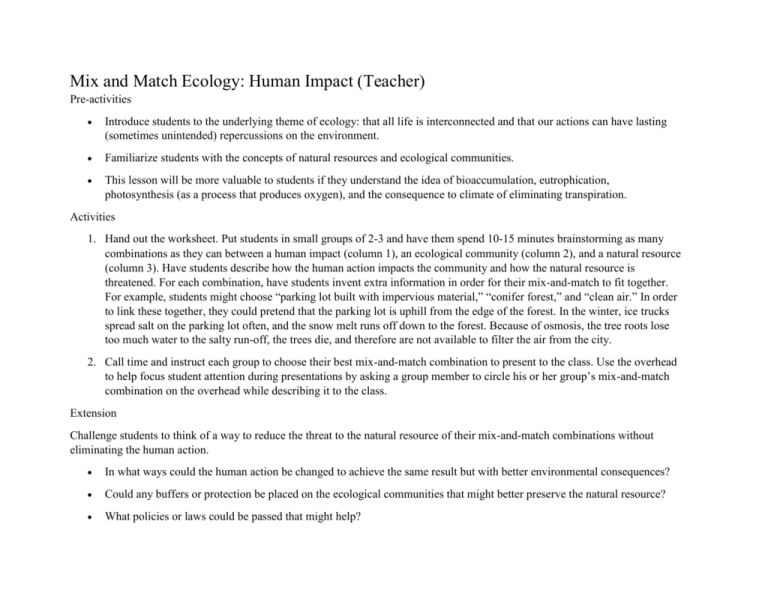
Mix and Match Ecology: Human Impact (Teacher) Pre-activities Introduce students to the underlying theme of ecology: that all life is interconnected and that our actions can have lasting (sometimes unintended) repercussions on the environment. Familiarize students with the concepts of natural resources and ecological communities. This lesson will be more valuable to students if they understand the idea of bioaccumulation, eutrophication, photosynthesis (as a process that produces oxygen), and the consequence to climate of eliminating transpiration. Activities 1. Hand out the worksheet. Put students in small groups of 2-3 and have them spend 10-15 minutes brainstorming as many combinations as they can between a human impact (column 1), an ecological community (column 2), and a natural resource (column 3). Have students describe how the human action impacts the community and how the natural resource is threatened. For each combination, have students invent extra information in order for their mix-and-match to fit together. For example, students might choose “parking lot built with impervious material,” “conifer forest,” and “clean air.” In order to link these together, they could pretend that the parking lot is uphill from the edge of the forest. In the winter, ice trucks spread salt on the parking lot often, and the snow melt runs off down to the forest. Because of osmosis, the tree roots lose too much water to the salty run-off, the trees die, and therefore are not available to filter the air from the city. 2. Call time and instruct each group to choose their best mix-and-match combination to present to the class. Use the overhead to help focus student attention during presentations by asking a group member to circle his or her group’s mix-and-match combination on the overhead while describing it to the class. Extension Challenge students to think of a way to reduce the threat to the natural resource of their mix-and-match combinations without eliminating the human action. In what ways could the human action be changed to achieve the same result but with better environmental consequences? Could any buffers or protection be placed on the ecological communities that might better preserve the natural resource? What policies or laws could be passed that might help? Mix and Match Ecology: Human Impact (Student) Mix and match as many combinations as you can. Choose a human action, think how it might affect a nearby ecological community, and which natural resource might be threatened as a result. Get creative! HUMAN ACTION ECOLOGICAL COMMUNITY NATURAL RESOURCE Rancher’s cows eat grass and excrete cow patties Conifer forest Clean air Freshwater pond home to turtles, snails, frogs, trout, etc. Clean fresh water Parking lot is built with impervious paving materials School group tours local state park Factory uses water to cool its machinery High rise apartment building is built Farmer fertilizes his/her crops Student takes a load of trash (including his/her old computer) to the dump Nutrient-rich, pH-balanced soil Deciduous forest in an area that receives moderate rainfall The decomposers in a cubic foot of soil Salt-water marsh where migrating birds stop to fish Grassland home to prairie dogs and American bison Shoreline full of rocky tide-pools home to limpets, starfish, anemones, etc. New highway is built Speedway holds loud races every Friday night Furniture factory has high levels of chemical emissions Climate (in an area where tourism drives the economy) The organisms living in the water and shore of a medium-sized mountain river Wildlife (for fishing, hunting, photographing, or inspiring) Timber for harvesting Sunlight Moving water (for beauty, hydroelectric power, or recreation) Mineral deposits
